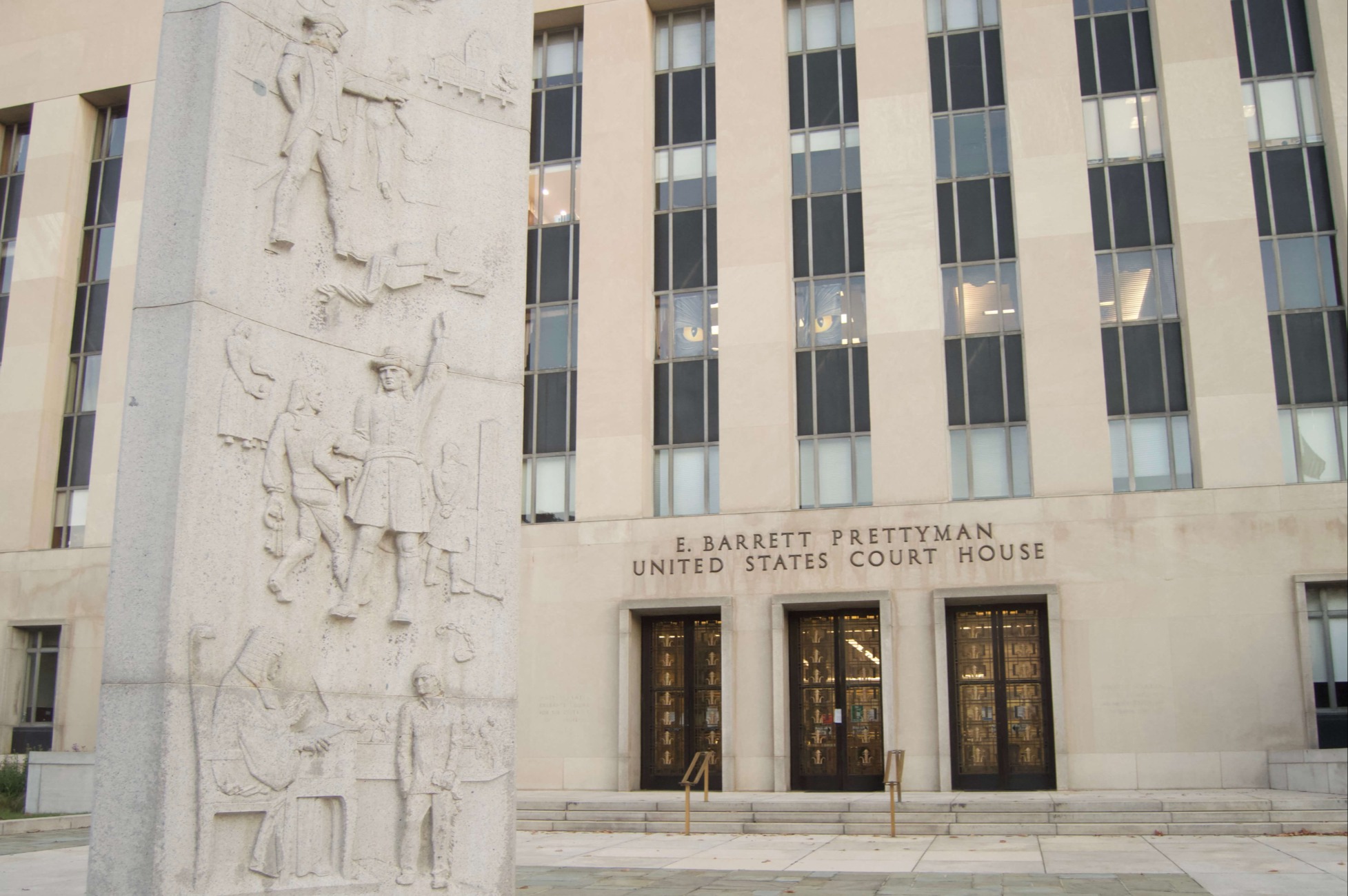The Temporary Restraining Order Against Trump’s Asylum Ban: Statutory Structure and Agency Discretion
Judge Jon S. Tigar of the U.S. District Court for the Northern District of California issued a nationwide temporary restraining order (TRO) on Monday of the Department of Homeland Security’s interim final rule implementing President Trump’s recent asylum proclamation.
Published by The Lawfare Institute
in Cooperation With

Judge Jon S. Tigar of the U.S. District Court for the Northern District of California issued a nationwide temporary restraining order (TRO) on Monday of the Department of Homeland Security’s interim final rule implementing President Trump’s recent asylum proclamation. While Judge Tigar’s issuance of the TRO was the correct outcome in the case and his focus on statutory text and past practice is persuasive, the decision fails to reinforce this analysis with references to the overall structure of the asylum provisions in the Immigration and Nationality Act (INA). This post aims to fill that gap.
By way of background, the interim final rule bars foreign nationals crossing between designated ports of entry on the U.S. southern border from seeking asylum; only individuals who apply at recognized ports of entry will be eligible. The rule allows those persons who cross between points of entry access only to remedies that are far more difficult to obtain, such as withholding of removal and relief under the Convention Against Torture (CAT). Foreign nationals (referred to as “aliens” under the INA) arriving between designated entry points who wish to seek asylum because of a “well-founded fear” of persecution will thus have to return to Mexico and endure additional risk traveling to a designated location. If they do not wish to take on this risk, they will have to meet a materially more onerous standard of proof to prevail in withholding or CAT cases. For support, the new proclamation relies on 8 U.S.C. § 1182(f)—the same provision that the government cited to support the travel ban—which authorizes the president to bar the entry of “any alien or class of aliens” whose entry would be “detrimental to the interests of the United States.” In addition, the government has asserted that under the INA provisions governing asylum procedure, the government has the discretion to implement this new rule as long as it is “consistent” with the statute.
Judge Tigar first focused on the disconnect between the new rule and the text of the INA’s asylum provisions. As I wrote previously on the Department of Homeland Security asylum rule, in 8 U.S.C. § 1158(a)(1) the INA expressly permits an asylum claim by “any alien who is physically present in the United States or who arrives in the United States (whether or not at a designated port of arrival)" (emphasis added). This inclusive provision reflected Congress’s appreciation that refugees often flee for their lives and cannot pick and choose the precise location at which they will seek relief.
Given that exigency, allowing an applicant for refugee status to assert a claim for asylum at any point along a land border is a key element of refugee protection. Moreover, as the Supreme Court explained in 1987 (Immigration and Naturalization Service v. Cardoza-Fonseca), Congress’s express authorization of claims for asylum was not inadvertent; Congress intentionally distinguished between asylum and the complementary remedy of withholding of removal, which entails a substantially higher standard of proof and does not provide a permanent legal status. Withholding—the principal protection authorized under the Department of Homeland Security rule—is by definition a fragile and fleeting safeguard. A foreign national who receives withholding of removal is removable once the situation in the recipient’s country of origin changes for the better. In contrast, asylum provides a pathway to lawful permanent residence and ultimately to citizenship. In this sense, the express authorization of asylum claims demonstrates Congress’s determination in § 101(b) of the Refugee Act of 1980 to establish a “permanent and systematic procedure for the admission … of refugees.” This goal does not fit well with the new rule’s contention that Congress sub silentio delegated power to immigration officials to substitute withholding of removal for the robust protections of asylum.
Judge Tigar’s focus on the asylum procedure provision’s text is commendable, as is his stress on immigration officials’ past practice, which I discuss later in this post. Nevertheless, Judge Tigar could have more fully acknowledged that arguments based on statutory structure reinforce the asylum provisions’ plain meaning. When Congress has spoken specifically about a given issue, courts tend to discount broad executive assertions of power over that issue as inconsistent with the statutory scheme. As a case in point, consider statutory procedures governing migration across the U.S.-Mexican border—the very issue that the new Department of Homeland Security rule covers.
For more than 20 years, Congress has legislated comprehensively in this space. In 1996, Congress enacted “expedited removal” provisions—now codified in 8 U.S.C. § 1225—that authorized summary deportation, without a full immigration court hearing, of certain foreign nationals apprehended at or near a land border. Despite the procedural shortcuts in expedited removal, which elicited criticism from refugee advocates, expedited removal also included a carve-out for asylum-seekers that authorized claims at any point along a land boundary. A foreign national could assert an asylum claim as long as that individual was physically present in the United States or had arrived at any point of entry, whether or not the government had officially “designated” that location. It is telling that Congress legislated in such detail about border crossings but took pains to preserve foreign nationals’ ability to claim asylum—the same ability that the Department of Homeland Security rule encumbers.
Moreover, the 1996 provisions also limited asylum in another important way that demonstrates Congress was aware of the challenges of mass migration. Congress barred asylum in most cases in which a noncitizen filed an application more than one year after the noncitizen’s “arrival in the United States.” See 8 U.S.C. § 1158(a)(2)(B). The one-year rule drastically narrows the relief available to persons who entered the United States at an undesignated border point.
Under this rule, noncitizens or foreign nationals in the United States, including those who have entered the United States at an undesignated border location (known as individuals who have entered without inspection, or “EWI”) have only a year to file an asylum claim “affirmatively” (i.e., on their own initiative) or interpose an asylum claim “defensively” to gain relief in removal proceedings. Congress was surely aware that EWIs filed asylum claims after their entry. If Congress had wished to categorically curtail these post-entry asylum applications, it could have simply precluded all such claims. Instead, Congress enacted a time limit that required prompt action by prospective asylum claimants. The one-year rule would have been largely unnecessary if Congress had empowered immigration officials to categorically deny EWI asylum claims, as the new Department of Homeland Security rule purports to do. Congress’s choice of the time limit instead of direct curbs on asylum-seekers’ manner of entry strongly suggests that Congress had rejected the new rule’s categorical approach. The new rule’s attempt to categorically regulate a prominent space that Congress has clearly occupied amounts to finding an “elephant in a mousehole”—an agency foible that Justice Antonin Scalia lampooned in Whitman v. American Trucking Association.
Even if the executive branch cannot invoke an asylum claimant’s manner of entry as a basis for a categorical denial of asylum claims, past practice indicates that the executive can still apply its discretion, albeit in a more tailored fashion. As Judge Tigar observed, the foremost administrative immigration tribunal, the Justice Department’s Board of Immigration Appeals (BIA), has long held that an immigration court can consider a foreign national’s manner of entry as one factor among many circumstances concerning a particular asylum claim. The BIA’s 1987 decision Matter of Pula allows consideration of manner of entry as “one of a number of factors,” including whether the claimant has sought asylum in another country before applying in the United States. However, Pula warned, manner of entry “should not be considered in such a way that the practical effect is to deny relief in virtually all cases.” Because asylum-seekers are often fleeing for their lives and cannot pick and choose their mode of border-crossing, categorical use of undesignated-entry-point arrival to deny asylum claims would risk barring the vast majority of claims. Judge Tigar was correct that more than 30 years of past practice support citing a claimant’s manner of entry as one factor governing asylum grants, but not wielding it as a categorical bar.
Overall, Judge Tigar’s decision reaches the correct outcome, but it would have benefited from even closer attention to the INA’s structure. Structural concerns will loom even larger as the asylum ban heads toward its likely destination: the Supreme Court. In the travel ban case, Trump v. Hawaii, the Supreme Court signaled that only an iron-clad textual and structural argument could overcome the deference the president customarily receives in national security and foreign affairs. In light of Trump v. Hawaii, advocates and other courts would do well to focus future efforts on the marked discordance between the INA’s structure and the asylum ban.





